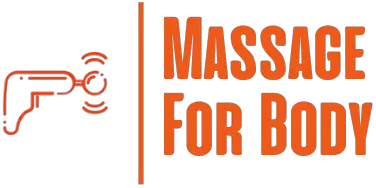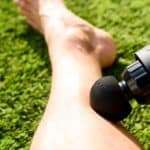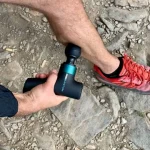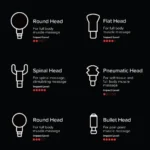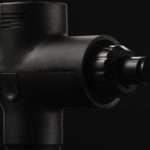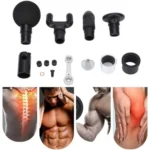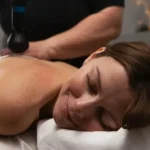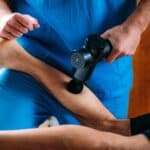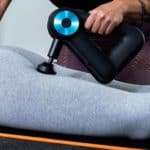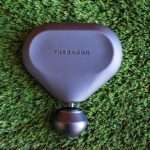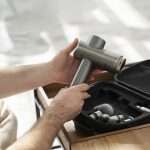If you’ve ever felt that searing bolt of pain travel from your lower back down your thigh, you know sciatica is more than a nagging ache—it’s nerve pain that can hijack your whole day. With wellness influencers touting percussive devices, you might be asking: Can a massage gun for sciatica actually calm this nerve—or is it just another fitness fad?
A massage gun works by delivering rapid, targeted pulses deep into muscle tissue, increasing blood flow and loosening tight spots that may be pressing on the sciatic nerve. When used correctly on supporting muscles—think glutes, piriformis, and hamstrings—this vibrational force can reduce tension around the nerve’s pathway, potentially easing discomfort and restoring mobility.
But a massage gun for sciatica isn’t a magic wand. Technique, timing, and intensity matter, and misusing one can aggravate symptoms. In the sections ahead, we’ll unpack the research behind percussive therapy, map out safe muscle targets, and highlight red-flag situations where you should skip the gun and see a professional instead. Pair these insights with gentle stretches and posture fixes, and you’ll have a comprehensive, evidence-based plan to tackle sciatica head-on.
Table of Contents
What Is Sciatica?
What Is Sciatica?
Sciatica isn’t a diagnosis—it’s a bundle of symptoms that start in your lower back and shoot down the path of the sciatic nerve, the body’s longest nerve. Classic signs include sharp or burning leg pain, tingling pins-and-needles, and sometimes numbness or weakness that can travel all the way to your calf or foot.
Why Does It Happen?
The sciatic nerve gets irritated or squeezed, usually at its root near the spine. Common culprits include:
- Herniated (slipped) disc – A damaged spinal disc bulges out and presses on the nerve.
- Spinal stenosis – Age-related narrowing of the spinal canal pinches nerve roots.
- Degenerative disc disease – Worn discs lose height, reducing space for the nerve.
- Spondylolisthesis – One vertebra slips forward over another, crowding the nerve.
- Pregnancy or pelvic shift – Extra weight and posture changes strain the lower back.
- Muscle imbalance or piriformis syndrome – Tight deep-glute muscles clamp the nerve.
- Tumors or cysts (rare) – Space-occupying growths can compress neural tissue.
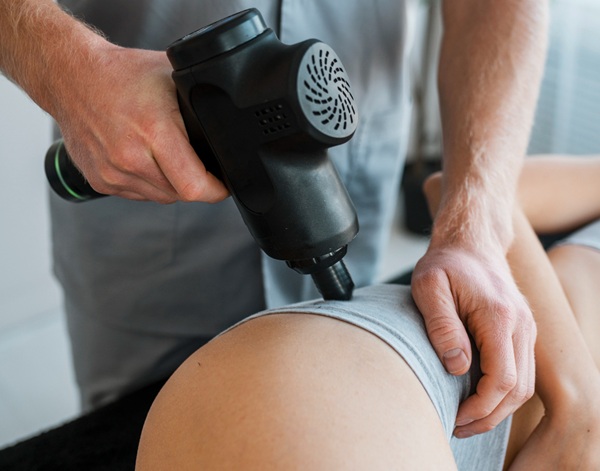
How Long Does It Last?
For many people, sciatica is short-lived and eases within a few weeks with rest, gentle movement, and conservative care. But when nerve compression persists—especially from structural issues like a herniated disc—symptoms can linger or become chronic, affecting sleep, work, and overall quality of life.
Understanding why your sciatic nerve is aggravated is the first step to choosing the right treatment plan—whether that involves physical therapy, targeted stretches, medical interventions, or complementary tools such as a massage gun for sciatica relief.
What is a Massage Gun?
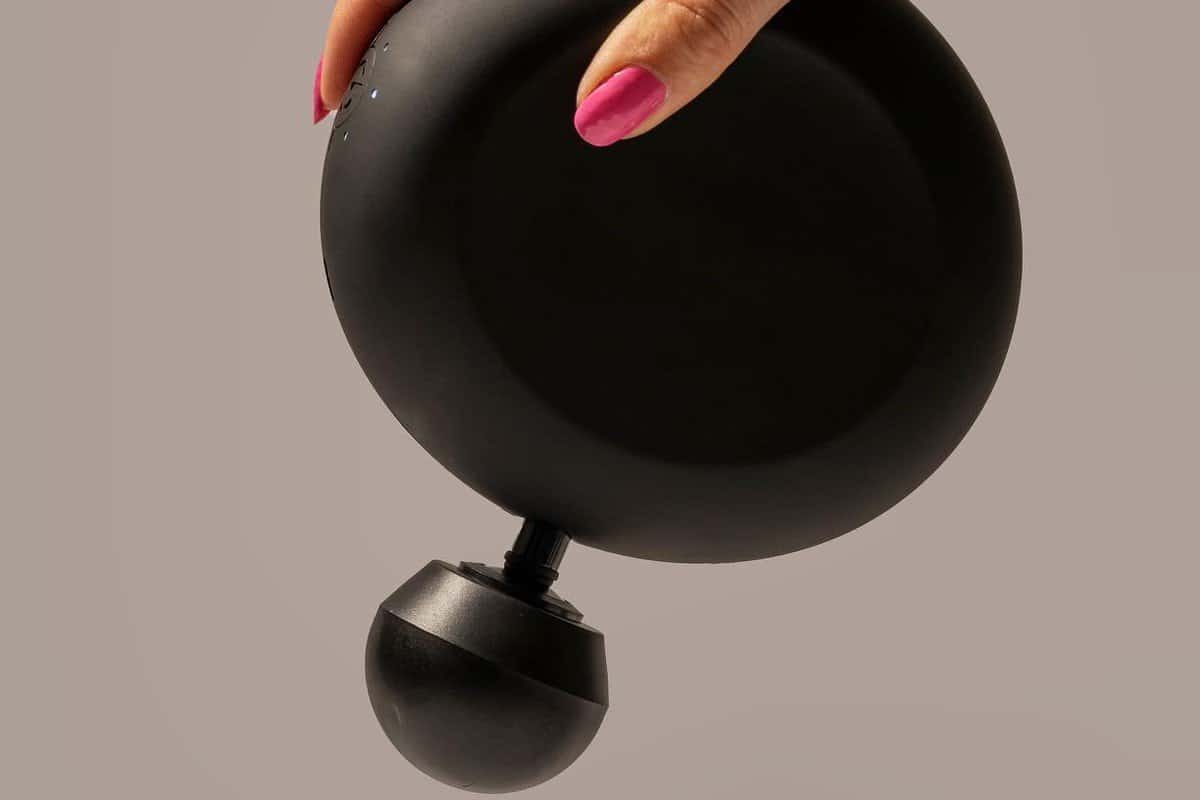
A massage gun is a cordless, drill-shaped device that pounds muscles with rapid, rhythmic strokes—often 2,000 – 3,000 pulses per minute. This percussive therapy boosts blood flow, releases stubborn knots, and temporarily dulls pain signals. When aimed at tight glutes, hamstrings, or piriformis muscles, it can ease the tension that compresses the sciatic nerve, making it a practical self-care tool for athletes, desk workers, and anyone battling sciatica-related discomfort.
Can You Use a Massage Gun For Sciatica?
Yes—but with caveats. A massage gun for sciatica can be an effective add-on to your pain-management plan, but results vary from person to person. Percussive therapy increases blood flow, relaxes tight glutes, hamstrings, and piriformis muscles, and may relieve the pressure that irritates the sciatic nerve.
Before you begin, talk with your doctor or physical therapist. They can confirm the underlying cause of your sciatica, show you the safest muscle targets, and set the right speed and pressure so you don’t aggravate the nerve. When cleared to proceed, keep sessions brief (30–60 seconds per muscle group), avoid direct contact with the spine, and stop immediately if numbness or sharp pain increases. Used mindfully alongside stretching, core strengthening, and professional care, a massage gun for sciatica can offer noticeable, at-home relief.
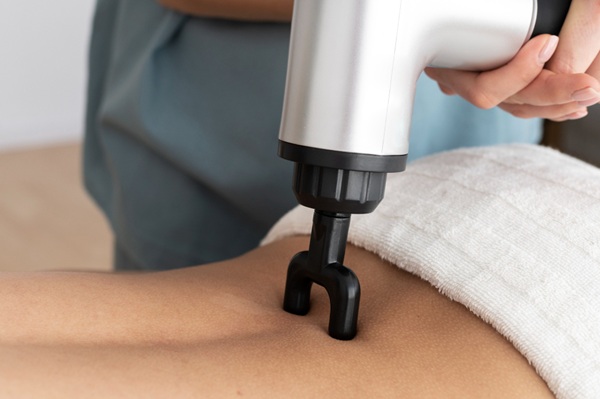
How Does a Percussion Massager Help with Sciatic Nerve Pain?
A percussion massager for sciatica is a handheld device that delivers short, rapid pulses of massage therapy to the affected area. This type of massage can help to loosen muscles and increase blood flow, which can reduce pain and inflammation.
One of the benefits of a percussion massager is that it can be used as often as needed. This makes it a convenient option for those who are dealing with chronic pain.
One of the conditions that a percussion massager can help with is sciatic nerve pain. A percussion massager can help to relieve sciatic nerve pain by breaking up the tension in the muscles that are pressing on the nerve.
The massager can also help to increase circulation and reduce inflammation. Another benefit is that a percussion massager can be used on other parts of the body, as well. This means that it can provide relief for other conditions, such as tension headaches or neck pain.
Percussive Therapy And Sciatica
When you suffer from sciatica, the only thought on your mind is how to eliminate the pain. However, sometimes the only way to get relief is to find a new form of therapy that can help you ease the pain.
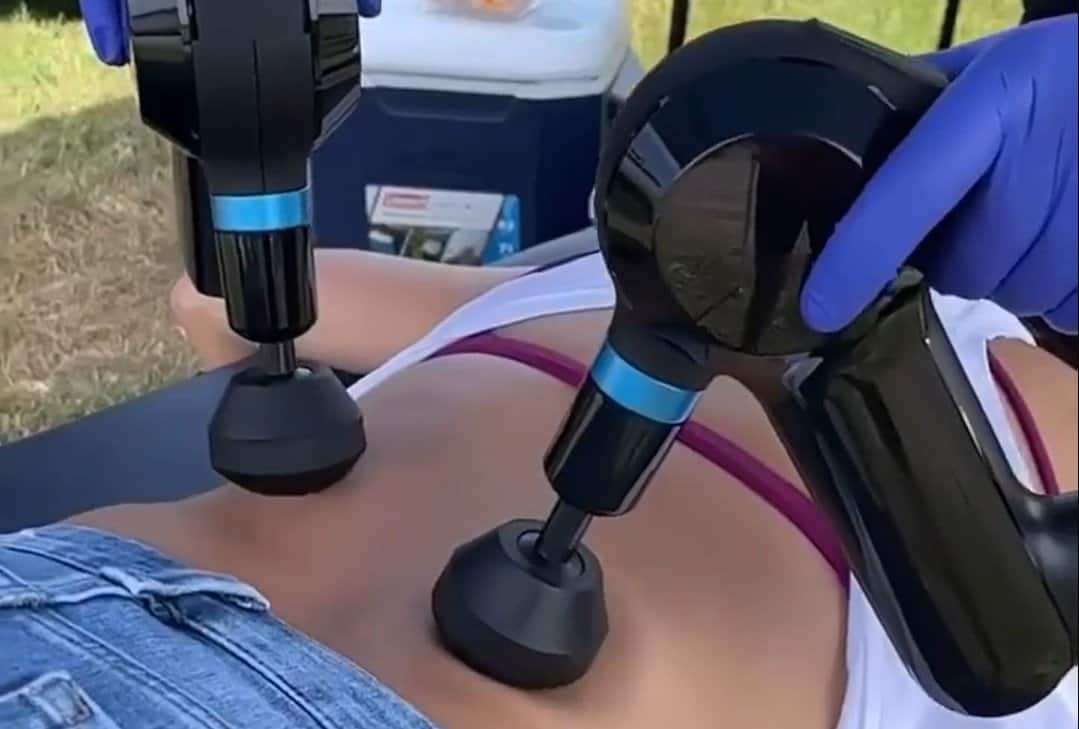
This is where percussive therapy for sciatica comes in. It is a new form of therapy that is helping people with Sciatica get the relief they need.
Percussive therapy is a type of massage that uses short, quick strokes to stimulate the muscles and soft tissues. This type of therapy is often used to treat pain, inflammation, and stiffness. It is also sometimes used to break up scar tissue.
Studies have shown that percussive therapy can be effective in treating sciatica. One study found that after eight weeks of treatment, nearly half of the participants had significant improvements in their pain levels.
Percussive therapy can be an effective treatment for sciatica. The quick, short strokes of percussive therapy can help to release the pressure on the nerve and reduce the pain.
Percussive therapy is often combined with other treatments, such as stretching and strengthening exercises, to provide the best results.
How to Use a Massage Gun For Sciatica
When used correctly, a massage gun can help to loosen up the muscles. This can lead to a significant reduction in pain and discomfort. However, it is important to use the massage gun correctly in order to avoid further injury. There are several points that need to keep in mind when using a massage gun for sciatica.
First, be sure to start with a lower setting and gradually increase the intensity as needed. Second, avoid using the massage gun directly on the sciatic nerve. Instead, focus on the muscles around the nerve. Finally, be sure to stop if you begin to feel any pain or discomfort.
If you are looking for a way to reduce the pain and discomfort of sciatica, a massage gun may be a good option for you. Be sure to use the gun correctly and stop if you feel any pain or discomfort.
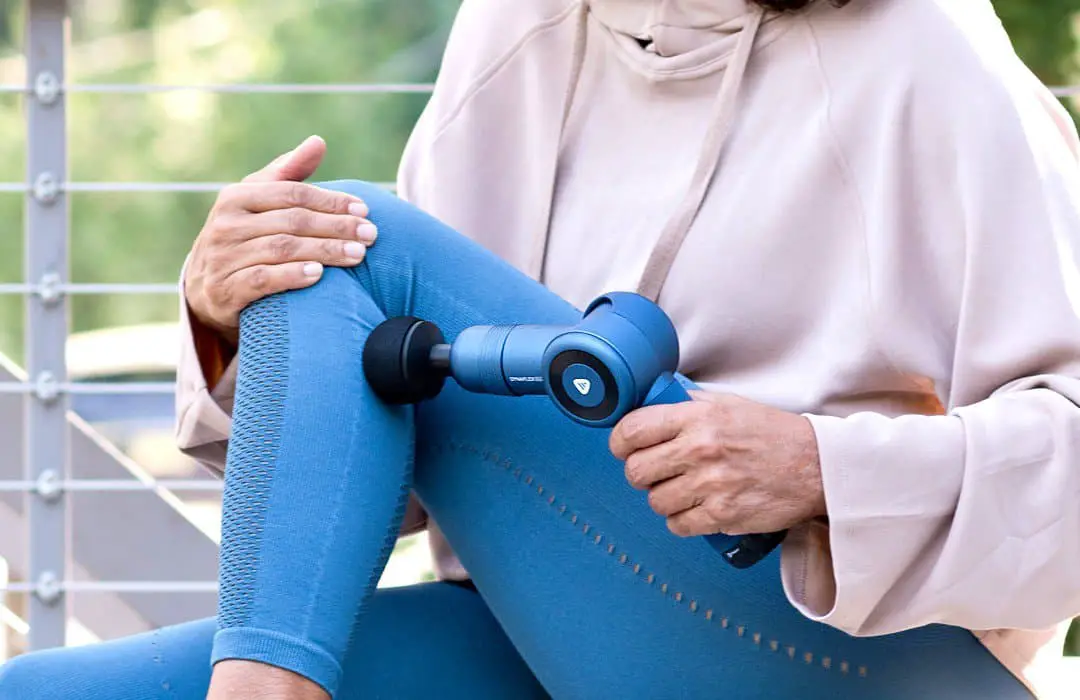
Can Massage Gun Help Sciatica?
Emerging research says yes—using a massage gun for sciatica may ease pain and restore mobility when applied correctly. In a 2020 pilot study, participants who added percussive-therapy sessions to their routine reported markedly lower pain scores and a notable boost in day-to-day comfort compared with a control group that skipped the treatment.
Similar results showed up in a 2019 investigation on chronic low-back pain (a frequent partner to sciatic nerve irritation). After eight weeks of targeted massage-gun use, subjects experienced not only reduced pain intensity but also measurable gains in overall quality of life.
While bigger, long-term trials are still needed, the pattern is encouraging: loosening tight glutes, piriformis, and hamstrings with a massage gun appears to relieve pressure on the sciatic nerve, giving many users tangible relief. In short, the current evidence points to percussive therapy as a promising—though not stand-alone—tool in a well-rounded sciatica management plan.
FAQ
What is the best massage gun for sciatica?
It is difficult to answer this question unambiguously. However, there are a few things to consider when choosing a massage gun for this condition.
First, it is important to choose a massage gun that is specifically designed for use on the lower back and buttocks. This will ensure that the massage gun can reach the sciatic nerve and provide relief.
Second, it is essential to select a massage gun with variable speed settings. This will allow you to adjust the intensity of the massage to your needs.
Finally, that is durable and easy to use. This will ensure that you can use the massage gun on a regular basis without having to worry about it breaking down.
Does a vibrating massager help sciatica?
A vibrating massager may help to relieve sciatica pain, but it is not a substitute for medical treatment. A person should consult a doctor before using a vibrating massager to treat sciatica.
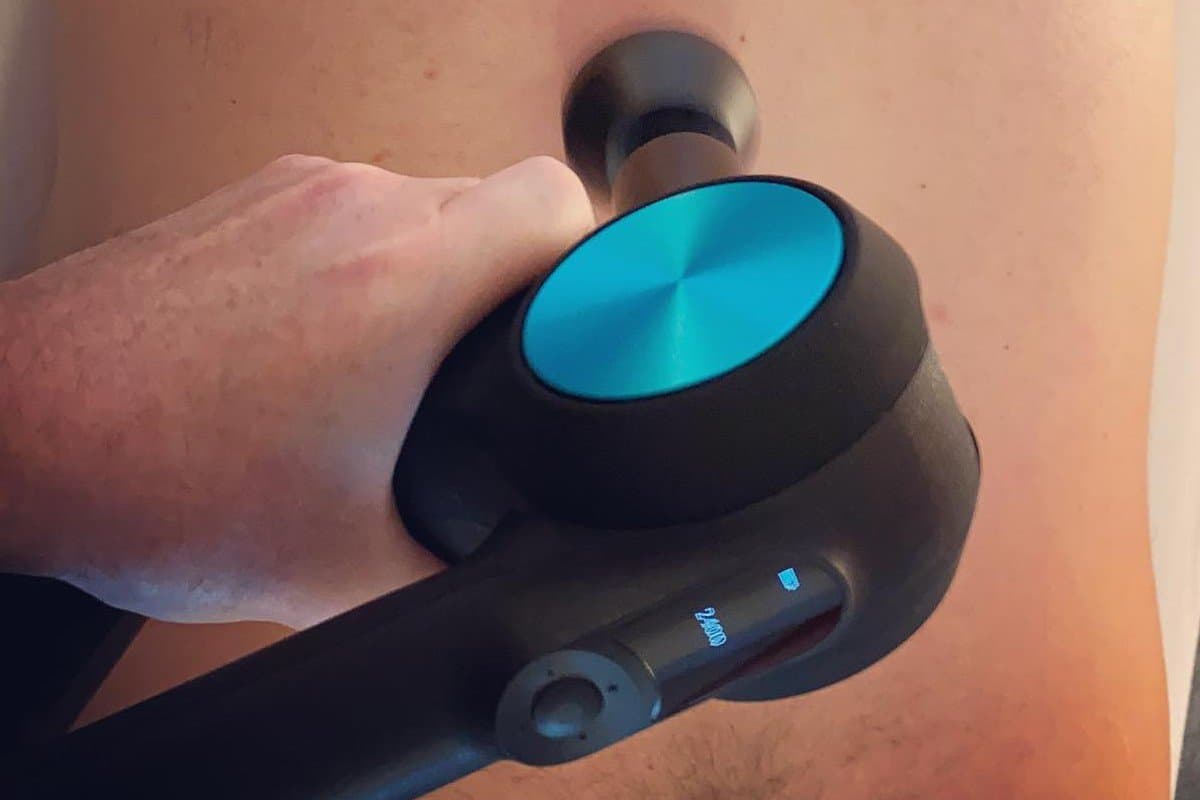
Is Theragun good for sciatica?
There is scientific evidence to support the use of the Theragun for sciatica. A study published in the Journal of Pain found that Theragun was effective in reducing sciatica pain. The study participants who used the Theragun had a significant reduction in pain.
Also Read:
Final Thoughts
So, are massage guns good for sciatica? The short answer is sometimes. Early research and plenty of first-hand reports suggest that a carefully used massage gun for sciatica can loosen tight glutes, piriformis, and hamstrings, dial down muscle spasms, and boost circulation around the irritated nerve—all of which may translate into tangible pain relief and better range of motion.
Pros:
- Rapid, targeted pressure can melt trigger-point tension that pinches the nerve.
- Increased blood flow may calm inflammation and speed up recovery.
- A handheld device lets you treat yourself at home between physio or chiro sessions.
Cons:
- It is not a cure; underlying issues (disc herniation, spinal stenosis) still need professional care.
- Using too much force or staying on the nerve itself can worsen symptoms.
- People with severe neuropathy, osteoporosis, or recent surgery should avoid percussive therapy unless cleared by a clinician.
In the end, effectiveness is personal. If light-to-moderate percussion feels good and reduces your symptoms, add it to a broader plan that includes stretching, core strengthening, and medical guidance. If pain flares or numbness spreads, stop immediately and consult a healthcare professional.
📚 References
- Sciatica – Penn Medicine, Philadelphia, PA
- Types of Sciatic Nerve Pain- Steven Yeomans, DC, FACO – Spine Health
- Muscle Spasms – Lily Guo – Osmosis platform
- Is A Massage Gun Good For Sciatica – Massage Gun Advice
⚠️ Disclaimer:
This article is for informational purposes only and does not constitute medical advice. Always consult with a licensed healthcare provider or certified massage therapist before beginning any new treatment, especially if you have pre-existing health conditions or concerns.
